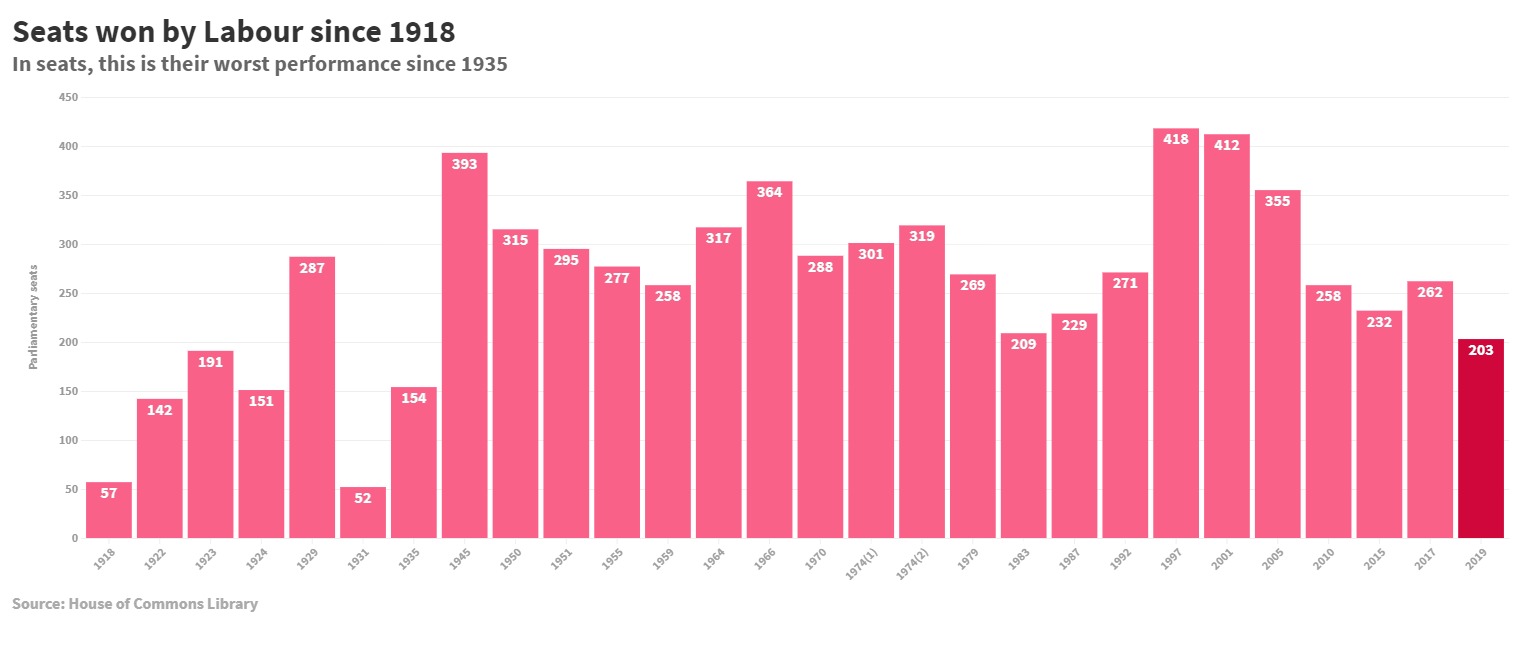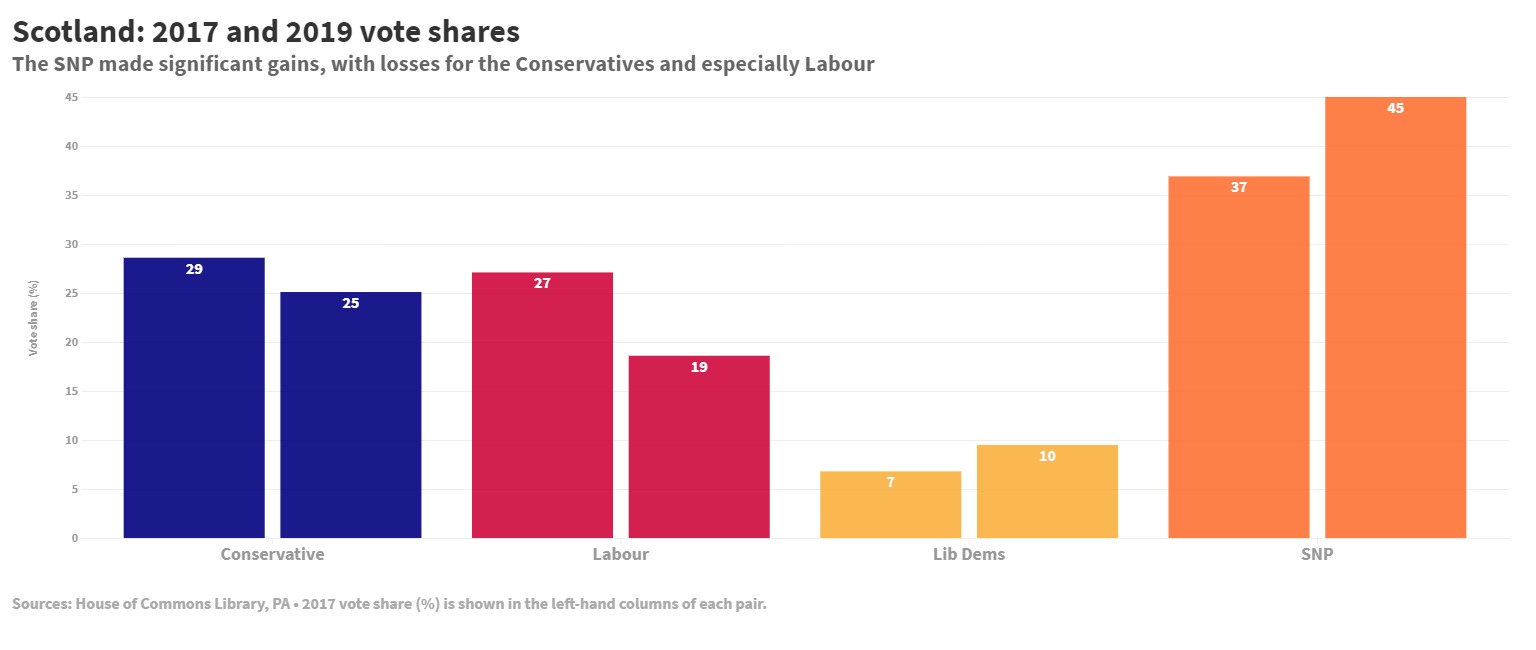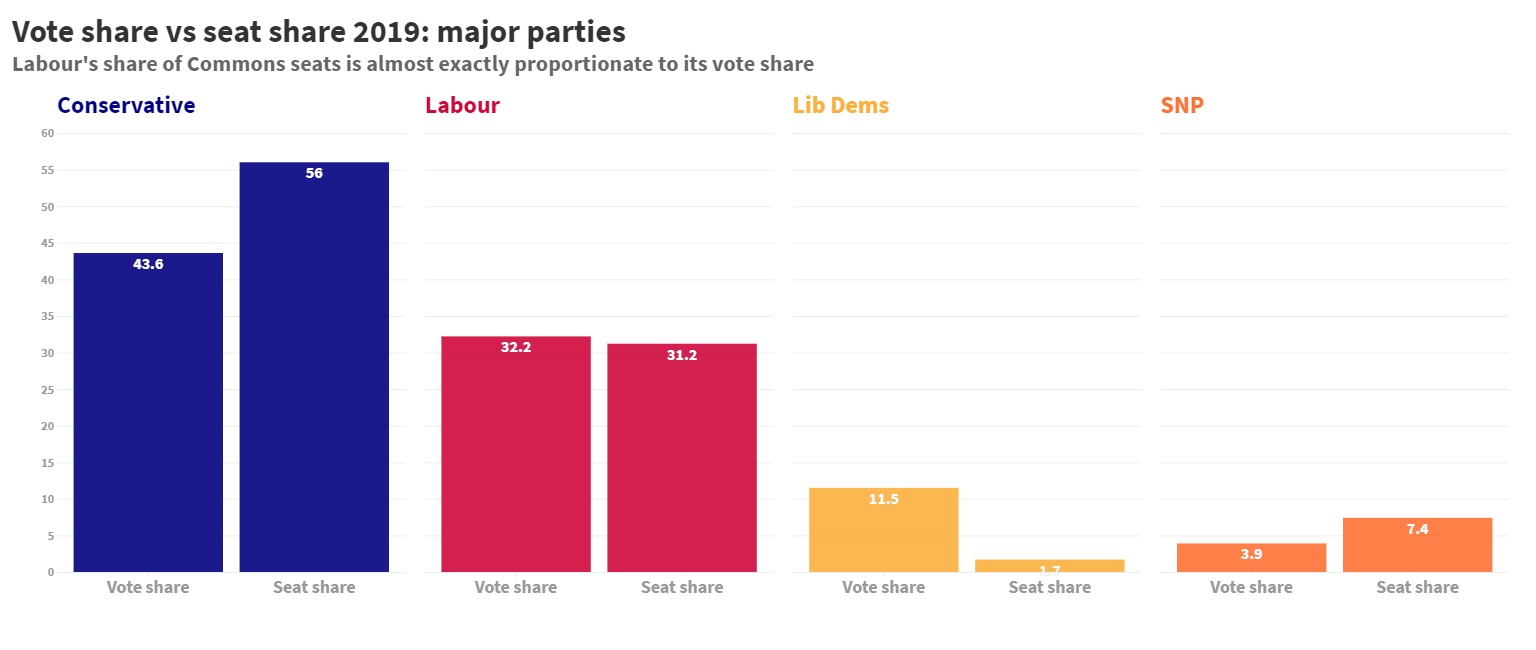The results are in and Boris Johnson has returned to Downing Street with a comfortable Conservative majority. Jeremy Corbyn, meanwhile, says he’ll not lead his party into the next election after suffering losses across traditional Labour heartlands.
Here are five graphs that tell the story of last night’s result.
Fewest Labour seats since 1935
Labour have secured 203 seats, their worst performance on this score since 1935.
Though that pre-war election was actually something of a victory for the still-young Labour party, and saw Clement Attlee gain over a hundred seats compared to the previous ballot.
By contrast, today’s result marks a significant decline in Labour’s seat share – a net loss of 59 MPs compared to 2017.

What about the share of votes?
Labour’s share of the vote isn’t quite so bad in historical terms. Having won 32 per cent of votes cast, Jeremy Corbyn has done slightly better than his predecessors Gordon Brown in 2010 (29 per cent) and Ed Miliband in 2015 (30 per cent).

Modest vote share gains for the Conservatives, major losses for Labour
The Conservatives have increased their share of the vote by just 1.2 per cent compared to 2017, but this has translated into a sizeable boost in seats.
Meanwhile Jeremy Corbyn’s Labour party is down 8 points on the last election.
The Liberal Democrats had a good night in terms of increasing their vote share – a five-point increase from 2017 – but struggled to convert that into seats.

Significant gains for the SNP
In Scotland, the SNP have made major gains since 2017, increasing their vote share from 37 to 45 per cent.
Meanwhile, there were losses for the Conservatives north of the border (down 4 points on 2017) and for Labour (down 8 points).

How did votes for the major parties translate into seats?
The Conservatives won 56 per cent of parliamentary seats with 44 per cent of the vote. Meanwhile Labour’s share of MPs is almost exactly proportionate to its vote share.
We’ve looked in more detail at how the parties could have fared under proportional representation in another article, which you can read here.




